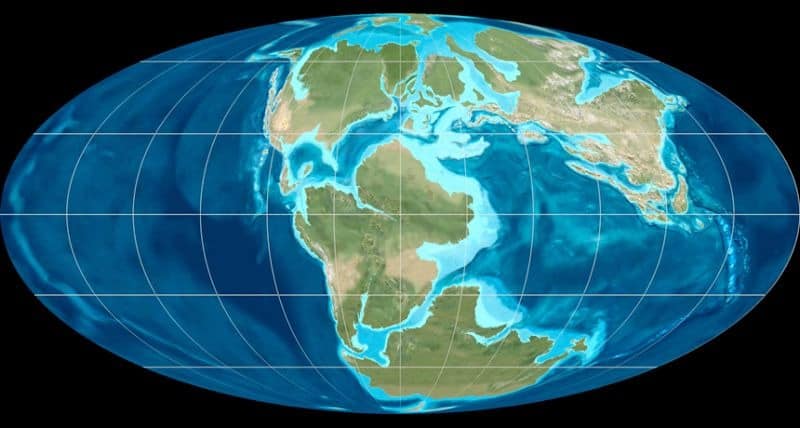Southeast Asia today is a vibrant mosaic of tropical jungles, glittering beaches, and cultures as diverse as its many islands. Spanning from the golden temples of Thailand to the misty highlands of Viet Nam, this region is home to over 650 million people. It’s a place of rich biodiversity, ancient civilizations, and strategic trade routes.
But what if we told you this familiar part of the world was once cradled within a colossal landmass that no longer exists?
Let’s travel back around 300 million years ago, to a time when the Earth looked completely different.
The Era of Pangea: One Earth, One Continent
Long before Southeast Asia took its current shape, all the continents were fused into a single supercontinent called Pangea. This massive landmass existed during the late Paleozoic and early Mesozoic eras, roughly 300 to 200 million years ago.
Back then, what is now Southeast Asia was nestled near the equator on the eastern edge of Pangea, most likely as part of Gondwana, a southern segment of the supercontinent that included present-day Africa, South America, Antarctica, Australia, and the Indian subcontinent.
The climate was different. The geography was alien. And yet, the seeds of today’s continents, including Asia, were already in motion.
When the World Began to Drift
About 200 million years ago, Pangea began to break apart. The Earth’s crust, divided into tectonic plates, started shifting gradually. Gondwana fragmented, and the chunk that would become Southeast Asia began to drift northward.

This slow motion wasn’t random. It was part of a massive geodynamic ballet, tectonic plates colliding, pulling apart, and reshaping Earth’s surface. When the Indian subcontinent later slammed into Asia, it gave rise to the Himalayas and pushed Southeast Asia into closer contact with the landmass known as Laurasia (which included modern Europe, northern Asia, and North America).
As this collision happened over millions of years, Southeast Asia began to wrinkle and crack, forming mountain ranges and subduction zones. The future region of Thailand, Malaysia, and parts of Indonesia experienced intense geological activity, giving birth to the dramatic topography we see today.
A Shifting Landscape Full of Clues
Geologists have found compelling evidence of this dramatic continental shuffle. Fossils of identical species like Mesosaurus and Lystrosaurus, have been discovered in lands now separated by oceans.
Layers of coal, typically formed in wet, forested regions, have been found in Antarctica, suggesting that what is now a frozen desert once sat near the equator. And in Southeast Asia, traces of ancient tectonic collisions are preserved in the rocks of Myanmar, Vietnam, and Borneo.
These clues don’t just confirm the science. They also remind us how connected Earth’s history truly is.
From Continental Fragments to Tropical Treasure
Fast-forward to today, and the result of this tectonic journey is nothing short of spectacular. Southeast Asia is now a network of peninsulas and archipelagos, straddling two major tectonic plates, the Eurasian Plate and the Indo-Australian Plate.
This geological positioning is why the region has such a dynamic landscape: active volcanoes, frequent earthquakes, and a wealth of mineral resources.
But the beauty doesn’t end there. Because of its ancient collisions and shifting latitudes, Southeast Asia became a biodiversity hotspot. From orangutans in Borneo’s rainforests to coral reefs in the Philippines, the region hosts countless species found nowhere else on Earth.
A Region Forged by Time
Understanding how Southeast Asia emerged from the heart of Pangea is more than just a lesson in geology, it’s a humbling reminder of Earth’s grand design. The region’s modern charm, from cultural wonders to natural riches, is the result of millions of years of tectonic movement and evolution.
As we enjoy the vibrant life of Southeast Asia today, it’s worth remembering the ancient journey that shaped it. This land of volcanoes and spice routes, of temples and tropical seas, was once just a small piece of a supercontinent.
And now, it’s a world of its own.


















